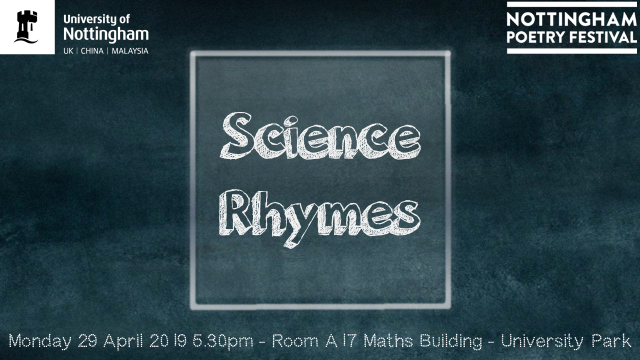Our blog Quanta Rei has been online for three and a half years. We’ve been exploring a variety of ways to convey our passion for science. Some of our posts have been rather technical, some more philosophical, some quite artistic. This post is about poetry.
Earlier this year, during a morning run, I suddenly remembered about my passion for rhymes. When I was in high school and later studying Physics at the University of Salerno (Italy), I spent many a hour composing sonnets – in Italian. Some of them being love poems, others being more humorous and satirical ones to be posted on the now defunct portal Risateonline.com – often in response to challenges set by my then competitor and now friend Rullianus. Then, not sure why, but I haven’t been writing poetry in almost two decades, till now.
 So the foolish idea I had during the run was to set the following challenge up to myself: for every paper published in the leading physics journal Physical Review Letters, I’d write a related poem and post it online. I am using a simple domain for this, with the acronym #PoetRL: https://poetrl.blogspot.com/
So the foolish idea I had during the run was to set the following challenge up to myself: for every paper published in the leading physics journal Physical Review Letters, I’d write a related poem and post it online. I am using a simple domain for this, with the acronym #PoetRL: https://poetrl.blogspot.com/
As it turns out, this year I’ve been particularly lucky with that journal, so I have had quite a lot of poetry to write in the last couple of months. If I am having fun doing so (although it takes a lot more effort for me to compose rhymes in English than in Italian), and my friends and students seem to be having fun reading the pieces, then maybe – I thought – I am not the only scientist who channels creativity by indulging in a passion for classic or modern poetry.
It then happened that a few weeks ago I saw on Twitter a call for events within the umbrella of the upcoming Nottingham Poetry Festival. Without thinking it through too much, I sent a brief description in response and came up with the idea for Science Rhymes: an evening in which a few staff and students from science-related departments at the University of Nottingham would present their own poetry inspired by the subjects they are passionate about. I didn’t really expect the idea to be too popular, as most of the colleagues I know were quick to admit they are in their comfort zone with numbers and equations, but frankly hopeless with poetic and other literary expressions. Nevertheless, a good number of people did find the idea exciting and decided to engage with it.
A big help came from the Mathematical Biology PhD student – and poet – Chris Lanyon, who was kind enough to organise a dedicated poetry workshop in the School of Maths last month, attended by a few students and colleagues, including myself. I was amazed at how expertly yet naturally he guided us to produce, on the spot, beautiful poetry, without the need for obsessive checking of Rhymezone or other dictionary tools. He taught us about some maths-inspired types of constrained writing, e.g. the “Fib”, a poetic form whose number of syllables in each row has to follow the Fibonacci sequence (1, 1, 2, 3, 5, 8, 13, …). We were also stimulated to create a more spontaneous style of poetry, combining our science specialty with particularly fond memories from our personal lives.

You will have the chance to experience all this, and much more, on Monday 29 April. I will be hosting Science Rhymes in room A17, in the Mathematical Sciences building of the University of Nottingham, starting from 5.30pm. The event is included in the official lineup of the Nottingham Poetry Festival.
The programme includes over 15 individual acts by students and colleagues, spanning several Schools in two Faculties (Science and Engineering). I have been crazy enough to prepare myself a bunch of (over 40) limericks as a way of introduction and presentation for each individual act. You can find me mostly writing poetry these days at work and at home, to be fair. Here’s one for a taste:
We’re going to explore many paths: From Chemistry, Physics, and Maths, Through Neuro- and Bio-Science, To Computer Science. We’ll give you some facts and some laughs.
There will be indeed a variety of science covered, and a plethora of poetic expressions, including a song by the one and only Phil Moriarty (details on his blog), and an AI-generated poem by our own Paul Knott, who will write a dedicated post in the future to explain all about how he trained a machine learning algorithm on his writings here on Quanta Rei as well as on Shakespeare’s sonnets, in order to generate the poem.
Enticed? Attendance is free! I hope to see you next Monday at Science Rhymes.
Science rhymes with love, passion, desire, Curiosity, brains on fire, Uncertainty, frustration, Discovery, celebration, A drive to reach deeper and higher.
Further info:
